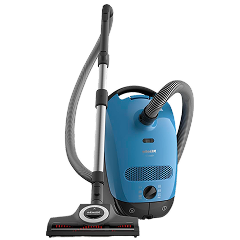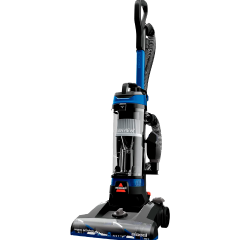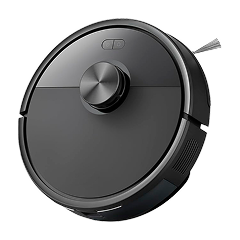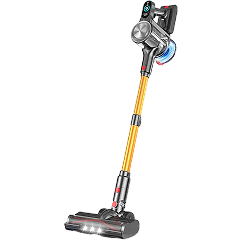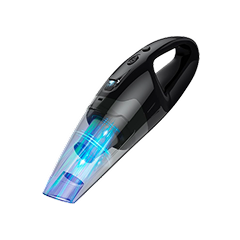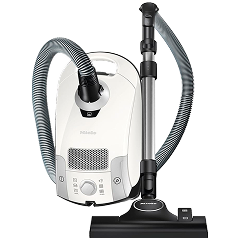In recent years, cordless vacuums have exploded in popularity. Brands have answered the demand by putting models in all shapes, sizes, and with different feature sets. With the huge number of choices and all the marketing jargon, it can be overwhelming to pick the right cordless to purchase.
Not to worry, I’ve been testing and writing about cordless and stick vacuums for over a decade. I want to share my insight on what makes a good cordless vacuum and how to choose the right one for your home.
How to Choose the Right Cordless Vacuum
Consider the charging dock
I know a charging dock is a strange thing to consider first, but hear me out. Cordless vacuums utilize four major methods to recharge. There’s the simple DC plug, a dock you need to drill into the wall, a small free-standing dock that slips behind the vacuum when it’s upright, and a large free-standing dock that you place the vacuum into.
You want to make sure that the dock is compatible with your living situation. For example, you don’t want to get a dock that you have to drill into the wall if you rent an apartment where that isn’t allowed. Or get a large free-standing dock when you don’t have the room for it.
Battery life
Battery life equates to the time you can use the cordless to clean. When brands list the battery life, it’s usually based on the lowest settings. In my experience, you can get the battery to the highest settings by halving the listed time. So, a 40-minute battery life becomes 20 minutes on the highest setting.
What’s considered a good battery life depends on the size of the area you’re hoping to clean regularly. For example, if you’re getting a cordless vacuum to spot clean crumbs in your kitchen or to clean a small apartment, a 10-20 minute battery life will suffice. However, if you expect to deep clean your floor and furniture, you’re going to need a more robust battery.
Cleaning power
Cleaning power can be denoted in two ways: suction and motor wattage. Some cordless vacuum brands use air watts, which are calculated by multiplying suction power by airflow and dividing that number by 8.5. Anything above 75 air watts is pretty powerful; anything over 100 is extraordinary.
Motor wattage is the amount of electricity the unit can draw over a period of time. For a cordless vacuum, you’re planning on cleaning your whole house with, I think anything over 400 watts will suffice for most people.
Does it have the right attachments?
One of the major advantages of a cordless vacuum over a full-sized upright or canister is the ease with which you can clean different surfaces in tight spaces. That can mean stairs, upholstery, and countertops.
For stairs, furniture upholstery, and car seats, you should look for a cordless vacuum that includes a mini-brush or, at the very least, has one for purchase. If you’re looking to clean behind couches or beds, you should make sure there’s a crevice tool available.
Overall, a cordless vacuum that will serve you well will have the right tools for the job.
What’s a good dirt capacity for a cordless vacuum?
Dirt capacity is how much dirt and debris a vacuum can hold before it needs to be emptied. Like battery life, it translates to how much cleaning you can do in one go. This is particularly important if you’re dealing with high-volume messes like pet hair.
Any cordless with a dirt capacity of 300ml or less is considered very small. On the other end of the spectrum, a capacity larger than a liter is substantial.
Some features help extend the capacity of a cordless vacuum, such as a compressor that helps tamp down on dirt and debris to make more room.
Cordless Vacuum Cleaners: Special Features
Swappable Batteries
A cordless vacuum with a swappable or removable battery gives you two major advantages. First, a battery is a major point of failure. A swappable battery allows for a quick fix. The second advantage is that you can add more cleaning time instantly. Many swappable batteries can be charged separately from the main unit, giving you more power on demand.
Self-Emptying
Increasingly, there are cordless vacuums that have a charging base that can suction out the contents of the dirt cup and place it into a disposable bag. This feature offers a number of advantages.
A lot of people don’t empty their vacuum’s dirt cup until it’s full. The problem is that odors can develop if you wait too long. On the other hand, when you empty a dirt cup, the resulting dust plume can reintroduce dust back into your home’s air.
A self-emptying vacuum that places the dirt into a sealed bag means you never need to touch, smell, or see anything unpleasant. And the dirt remains in the bag when you toss it into the trash.
LED lights and Dirt Detection
A lot of cordless vacuums come with LED lights on the main brush head. This can help you spot dust bunnies in dark places, such as under the couch. Higher-end models also might come with a dirt detection sensor. Some models have a light that tells you if the sensors detect dirt, while others even have a screen that displays what the vacuum is picking up.
Filters
The most common type of filter cordless vacuums have are HEPA or HEPA-like. These types of filters focus on removing particulate matter from the air. You may encounter claims of a washable filter. Oftentimes, it’s a washable pre-filter—one designed to prevent large debris like hair from clogging the finer filter. A washable pre-filter is nice, but it does mean that there will still be a filter you need to replace periodically.
Cordless Vacuum Cleaner Brands & What to Expect
Dyson
Dyson has some of the most iconic and best-selling cordless vacuum models. You can expect powerful suction and high-end engineering. For example, there are Dyson models that have special lasers to help illuminate dirt on dark floors and LCD screens that display troubleshooting information.
Tineco
Tineco is a brand that pops up on Amazon a lot. In my experience, the company has a second-adopter strategy. Basically, Tineco waits to see what succeeds with other brands and then comes out with an affordable version of its own.
What you typically get is a cordless vacuum that is really good value, tons of features, and above-average suction. The downside is that you don’t tend to get the most cutting-edge technology, such as longer-lasting batteries.
In my experience, since Tineco is mostly sold on Amazon, the price fluctuates a bit and there’s always another sale on the horizon.
Samsung
When you think Samsung, you’re probably not thinking of vacuums. However, the Korean giant makes some excellent cordless vacuums. The best models have features like self-emptying and automatically adjusting suction, so they save on battery life while also not sacrificing cleaning power.
Samsung’s online shopping experience is a bit on the wonky side. While the cordless vacuums are very good, the supply, including spare parts, can be hit or miss.
Common Mistakes People Make When Purchasing a Cordless Vacuum
Picking price over quality
It’s really easy to choose a product on price alone. We’re all feeling the mounting pressure of inflation. However, if you invest in quality now, it’s going to pay dividends in the long run. Yes, it’s important to shop within your means, but it’s also equally important to shop to meet your needs.
For example, let’s say you have a home with a dog that sheds a lot. If you go for the cheapest vacuum, you may end up wasting hours of time, cutting tangled fur out of the brush roll just to get it to run. Instead, invest a little more and get a vacuum with an anti-tangle brush head that can actually keep your pet’s hair at bay.
Not considering attachments
Vacuum cleaners most commonly clean floors. However, cordless vacuums also often double as handhelds, allowing them to easily clean furniture and countertops. If you’re just focused on cleaning your hardwood and rugs, you’re not getting the full value out of your cordless vacuum cleaner.
Not considering your floor type and floor plan
Different types of vacuums have different types of brushes. Wide and stiff bristles are better suited for cleaning carpets. Soft bristles that are more akin to microfiber are better at getting fine dust off bare floors. And some flooring, like wood laid in the parquet style, can be damaged by using the wrong vacuum.
You also need to consider if the cordless vacuum’s battery life is capable of covering your floor plan. Most people spend between five and ten minutes per room, depending on the number of surfaces and how often they clean. You want to get a vacuum that fits your cleaning schedule.
Not thinking about your own physicality
Cordless vacuums are known for how portable they are. However, if you lack hand and arm strength they can be hard to push or lift up. If you do have issues with mobility, you should also consider the cordless vacuum’s height. Some cordless models have adjustable telescopic wands, but if they don’t, you might need to stoop to get them to work properly.
Also, you might need to consider weight if the cordless vacuum cleaner uses a freestanding dock. They can weigh up to 20 pounds and be difficult to move should the need arise.
Not keeping the maintenance in mind
A vacuum requires new filters, new bags, and sometimes new belts to keep working. Ensure that the filters are replaced on time and that you have cleaned out the dust cup from time to time to combat malodor.
So, a mistake people make is that they purchase a vacuum with no regard to getting extra filters, and when their vacuum’s performance starts to drop off or the bin gets full, they have no spare parts to get it up and running again.


